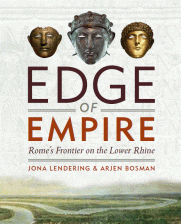
A wild pig, the companion of St. Anthony.
Up on Lacus this morning, a little piece on Poisons and Poisoning among the Romans: it could have, should have, been entertaining, but is instead a pretty bland compendium of the subject in Roman authors, and only the more famous of them at that. Still useful: it collects a number of sources.
These days, though, I’m never too far from Plutarch: and sure enough, here too the fine Italian hand of that author; my only real reason for putting up the poison article was that it’s cited in a footnote to Plutarch’s much more entertaining Gryllus, a charming dialogue between Odysseus and a pig, in which Grunter comes out better, naturally — hey, he’s a sophist. The Greek text and a French translation, as often, can be found on Philippe Remacle’s site.
My illustration — since Jona seems to crave one for every posting — is not quite as irrelevant as it might seem. Once again, Plutarch has written us something that reads rather like the Sayings of the Desert Fathers, the first of whom was St. Anthony, staying in his cave well away from people (sensibly enough) and keeping a pig and a raven for company; the faithfulness of the crow comes in for praise from Plutarch in this dialogue as well. This pig was prominent in the life of the saint, becoming one of Anthony’s two main iconographic attributes; even when saint and inscription have vanished from a medieval depiction, the pig is enough to identify him. This particular bit of fresco is, if I remember correctly, one of those. It’s in Bovara, a little town near Trevi in Umbria, named not after pigs but cows; it seems to have been an important cattle market in Roman times — see my page on the place.



 Posted by Bill Thayer
Posted by Bill Thayer 
 Subscribe to feed
Subscribe to feed